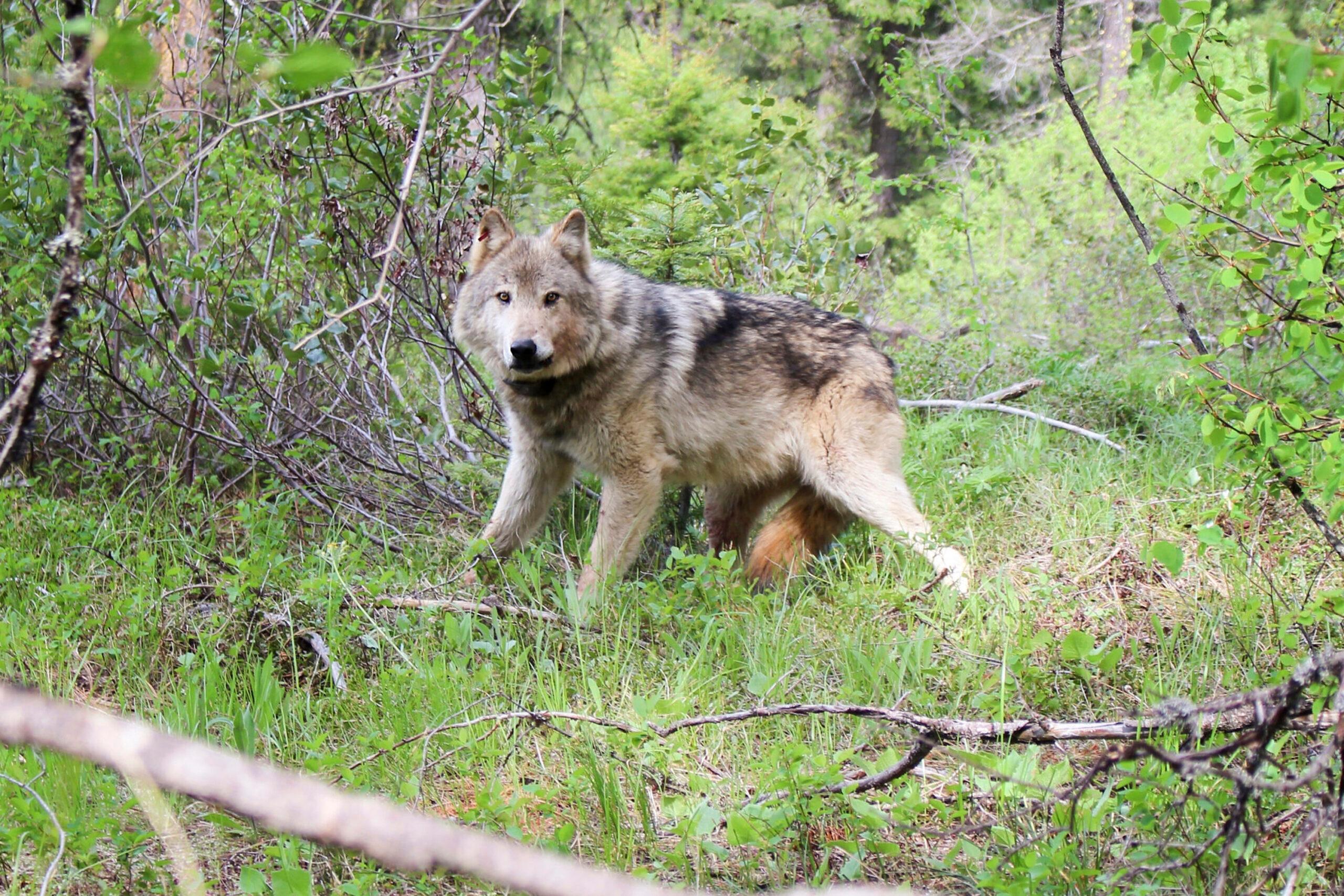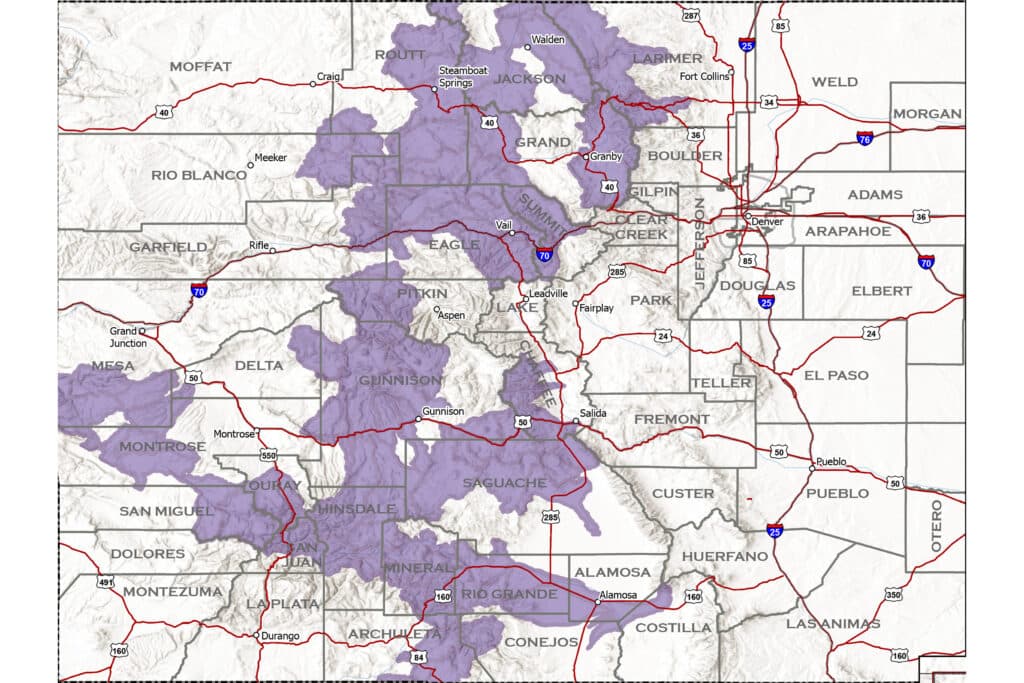
Some lone gray wolves are expanding their territory further south in the state, according to a new map of wolf activity from Colorado Parks and Wildlife.
The map, which tracks collared wolves from Sept. 23 through Oct. 21, shows watersheds where wolves have been detected. It shows wolf activity reaching farther into the San Luis Valley than ever, since the voter-approved reintroduction launched in 2023. Where previous months showed wolves visiting the western edges of the vast agricultural valley, October’s map tracked wolves as far east as Alamosa and Conejos counties and as far south as the New Mexico border.
Wolves have historically been extirpated in the Eastern Plains, which has a high number of ranchers. The wolf movement comes amid tension between the state and Western Slope ranchers whose livestock have suffered wolf predation.

Purple areas of the map indicate watersheds visited by wolves over the month-long timeframe. CPW Wolf Monitoring and Data Collector, Brenna Cassidy, said wolf activity in the San Luis Valley is not coming from the state’s four established packs. Rather, these are individual wolves looking for potential locations to establish their own packs.
“Their goals are to explore, to find a mate, to find a territory,” Cassidy said. “That is part of wolf biology, is for them to grow up in a pack, become an adult, and leave their pack to go try and find a new area.”
Lone wolves may travel 100 to 200 miles a week, Cassidy said, which can drastically alter the monthly watershed map. Recent months have shown wolf activity in watersheds on the Utah border and October’s map shows activity on the New Mexico border for the first time.
CPW does not comment on wildlife movements outside the state. Colorado has a memorandum of understanding with the states of Utah, Arizona and New Mexico to capture and return Colorado wolves. Those agreements have not yet been put into practice, CPW said.
News of wider wolf dispersal in Colorado comes as the Trump Administration has told the state to stop importing wolves from Canada as part of its reintroduction efforts. At least 30 wolves are roaming the state, according to latest CPW estimates from June. The state’s management plan projects that potentially 200 wolves could live in the state long term.









